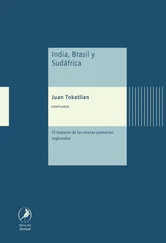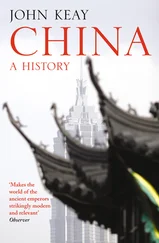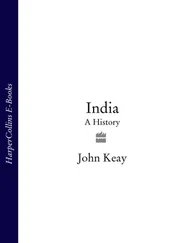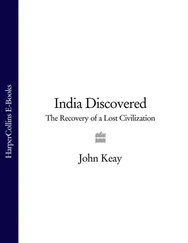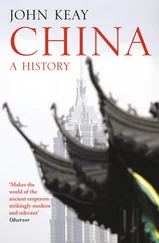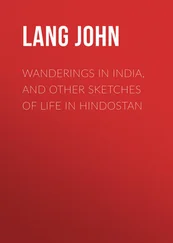The word for a ‘river’ in Sanskrit is sindhu . Hence sapta-sindhu meant ‘[the land of] the seven rivers’, which was what the Vedic arya called the Panjab. The Indus, to which most of these seven rivers were tributary, was the sindhu par excellence ; and in the language of ancient Persian, a near relative of Sanskrit, the initial ‘s’ of a Sanskrit word was invariably rendered as an aspirate – ‘h’. Soma , the mysterious hallucinogen distilled, deified and drunk to excess by the Vedic arya , is thus homa or haoma in old Persian; and sindhu is thus Hind[h]u . When, from Persian, the word found its way into Greek, the initial aspirate was dropped, and it started to appear as the route ‘Ind’ (as in ‘India’, ‘Indus’, etc.). In this form it reached Latin and most other European languages. However, in Arabic and related languages it retained the initial ‘h’, giving ‘Hindustan’ as the name by which Turks and Mughals would know India. That word also passed on to Europe to give ‘Hindu’ as the name of the country’s indigenous people and of what, by Muslims and Christians alike, was regarded as their infidel religion.
On the strength of a slightly earlier Iranian inscription which makes no mention of Hindu , it is assumed that the region was added to Darius’ Achaemenid empire in or soon after 520 BC. This earlier inscription does, however, refer to ‘Gadara’, which looks like Gandhara, a maha-janapada or ‘state’ mentioned in both Sanskrit and Buddhist sources and located in an arc reaching from the western Panjab through the north-west frontier to Kabul and perhaps into southern Afghanistan (where ‘Kandahar’ is the same word). According to Xenophon and Herodotus, Gandhara had been conquered by Cyrus, one of Darius’ predecessors. The first Achaemenid or Persian invasion may therefore have taken place as early as the mid-sixth century BC. That it was an invasion, rather than a migration or even perhaps a last belated influx of charioteering arya , seems likely from a reference to Cyrus dying of a wound inflicted by the enemy. The enemy were the ‘Derbikes’; they enjoyed the support of the Hindu people and were supplied by them with war-elephants. In Persian and Greek minds alike, the association of Hindu with elephants was thereafter almost as significant as its connection with the mighty Indus. To Alexander of Macedon, following in the Achaemenids’ footsteps two centuries later, the river would be a geographical curiosity, but the elephants were a military obsession.
If Gandhara was already under Achaemenid rule, Darius’ Hindu must have lain beyond it, and so to the south or the east. Later Iranian records refer to Sindhu , presumably an adoption of the Sanskrit spelling, whence derives the word ‘Sind’, now Pakistan’s southernmost province. It seems unlikely, though, that Sindhu was Sind in the late sixth century BC, since Darius subsequently found it necessary to send a naval expedition to explore the Indus. Flowing through the middle of Sind, the river would surely have been familiar to any suzerain of the region. More probably, then, Hindu lay east of Gandhara, perhaps as a wedge of territory between it, the janapadas of eastern Panjab, and the deserts of Rajasthan. It thus occupied much of what is now the Panjab province of Pakistan.
Under Xerxes, Darius’ successor, troops from what had become the Achaemenids’ combined ‘satrapy’ of Gandhara and Hindu reportedly served in the Achaemenid forces. These Indians were mostly archers, although cavalry and chariots are also mentioned; they fought as far afield as eastern Europe; and some were present at the Persians’ bloody victory over Leonidas and his Spartans at Thermopylae, and then at the decisive defeat by the Greeks at Plataea. Through these and other less fraught contacts between Greeks and Persians, Greek writers like Herodotus gleaned some idea of ‘India’. Compared to the intervening lands of Anatolia and Iran, it appeared a veritable paradise of exotic plenty. Herodotus told of an immense population and of the richest soil imaginable from which kindly ants, smaller than dogs but bigger than foxes, threw up hillocks of pure gold-dust. The ants may have intrigued entomologists, but the gold was what registered in political circles. With rivers to rival the Nile and behemoths from which to give battle, it was clearly a land of fantasy as well as wealth.
Herodotus, of course, knew only of the Indus region, and that by hearsay. Hence he did not report that the land of Hindu was of sensational extent, nor did he deny the popular belief that beyond its furthest desert, where in reality the Gangetic plain interminably spreads, lay the great ocean which supposedly encircled the world; Hindu or ‘India’ (but in fact Pakistan) was therefore believed to be the end of terra firma , a worthy culmination to any emperor’s ambitions as well as a fabulous addition to his portfolio of conquests. In abbreviated form, Herodotus’ History circulated widely. A hundred years after his death it was still avidly read by northern Greeks in Macedonia, where a teenage Alexander ‘knew it well enough to quote and follow its stories’. 2
The traffic that resulted from the Achaemenid incursion into India was not all one-way. It may well have been from contacts between Indian troops and the enemies of the Achaemenid empire that Sanskrit acquired a name for the Greeks. Long before Alexander’s arrival on the scene, they became known in India as Yona or Yavana , words derived from a Persian spelling of ‘Ionian’ but which would thereafter serve to designate almost any people belonging to the lands west of the Indus who were alien to India’s traditions. Such peoples were also by definition mleccha (foreign and unable to speak properly), and hence despicably casteless. But caste being assimilative as well as exclusive, they might, as overlords, aspire to the status of vratya ksatriya , or ‘degenerate’ ksatriya . Macedonians, Bactrians, Kushans, Scythians and Arabs would all at some time be called Yavanas , and many would eventually be awarded vratya caste status.
On the frontier of the Achaemenids’ Indian satrapy lay the city of Taxila (Takashila). Some thirty kilometres from what is now Pakistan’s capital of Islamabad, it was not agriculturally disadvantaged, although in the absence of major irrigation schemes the Panjab was scarcely the land of wheat, sugarcane and canals which it is today. Indeed, Taxila seems to have owed its early urbanisation more to its economically strategic location. Here, by way of rugged trails like that of the Khyber from Afghanistan, passed all trade – horses, gold, precious stones and luxury textiles – between the Achaemenid world and the emerging Gangetic states. The city prospered as did the satrapy. According to Herodotus, the latter yielded to the Achaemenids a tribute of ‘ant-gold’ which was nearly five times more than the tribute extracted from Babylon and seven times that from Egypt.
Such wealth attracted to Taxila artisans and scholars as well as merchants. Sir John Marshall, who excavated the site in the 1940s, found three cities, the oldest of which lay beneath the Bhir Mound. There rubble walls indicated several levels of occupation, beginning with one which certainly belonged to the Iron Age and probably to ‘the close of the sixth century BC’.
… it would follow that this, the earliest settlement on the Bhir Mound, was little, if at all earlier than the invasion of Darius I; and it may even be plausibly conjectured, though there is no tangible evidence to support the conjecture, that Taxila owed its foundation to the Persian conqueror. 3
Читать дальше


